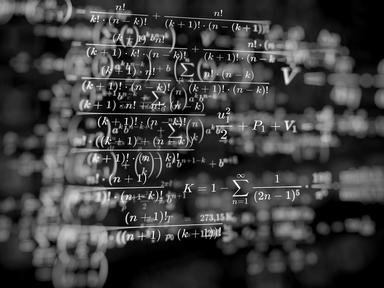Quiz Answer Key and Fun Facts
1. The famous Pythagorean Theorem, which states that the sum of the squares of the legs of a right triangle is equal to the square of the hypotenuse, is actually a special case of what theorem/law?
2. This theorem, considered a fundamental theorem in mathematics, links two branches of calculus: differential calculus and integral calculus. This is known as the...
3. Limits - everyone's favourite! This rule/theorem uses derivatives to calculate limits of indeterminate forms (that of the form 0/0 or infinity/infinity). This is known as...
4. The indefinite integral of e^(x^2) is one of the many very special integrals. What makes it so special, in terms of numerical integration?
5. Again, limits - my old friend. This theorem can be quite useful if you're not familiar with l'H˘pital's Rule. It states that if a function is bounded by two other functions and those two functions approach the same limit at a point, the function that is in between must also approach that very same limit. This is known as the...
6. Hyperbolic Functions - very interesting functions you learn about early in university calculus. One of the most famous applications of hyperbolic functions is to describe the shape of a hanging wire. The shape of the curve is given by the following equation: y = c + a cosh(x/a), where one can see the use of the hyperbolic function: cosh (hyperbolic cosine). What is the equation called?
7. A very important thing to do, especially in mathematics, is to read your question(s) carefully. With that said, check out this integral:
"the integral with limits from -1 to 1 of (1/x) dx."
What, if anything, is wrong with this integral?
8. In linear algebra, there is such a thing called mapping, using linear transformations. There are two properties that a transformation must hold in order to be linear:
1. Additivity: f(x + y) = f(x) + f(y)
2. Homogeneity: f(cx) = c f(x), where c is a constant
An additional property (although sometimes not reliable) is that f(0) = 0.
Knowing all this, which of the following transformations is linear?
9. When doing matrix row operations on a set of linear equations, you happen to get a row that looks like this:
[0 0 0 ... 0 | x ], where x is any non-zero number
You would classify this system as being...
10. Here is an equation:
(x,y,z) = (1,2,5) + t1(2,0,0) + t2(0,1,-2)
What does this equation represent?
Source: Author
icarus1988
This quiz was reviewed by FunTrivia editor
crisw before going online.
Any errors found in FunTrivia content are routinely corrected through our feedback system.
